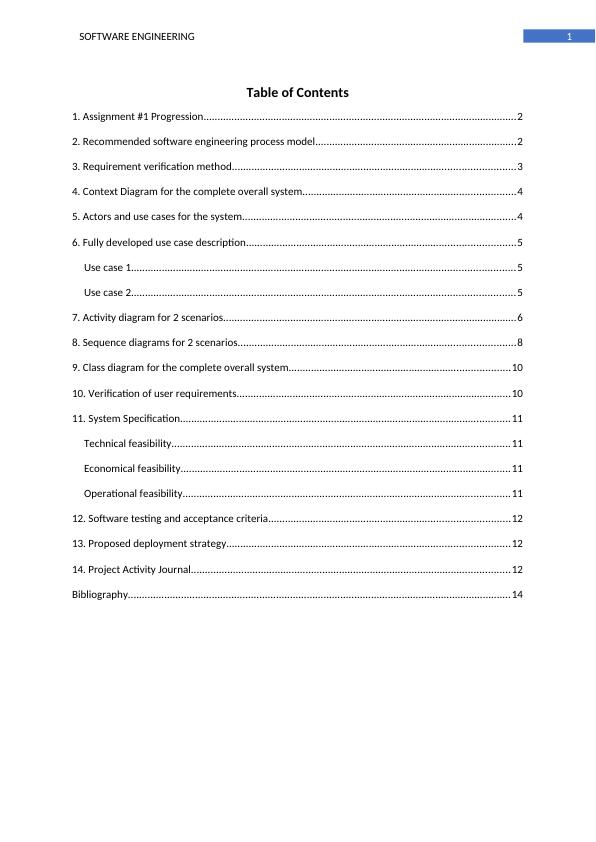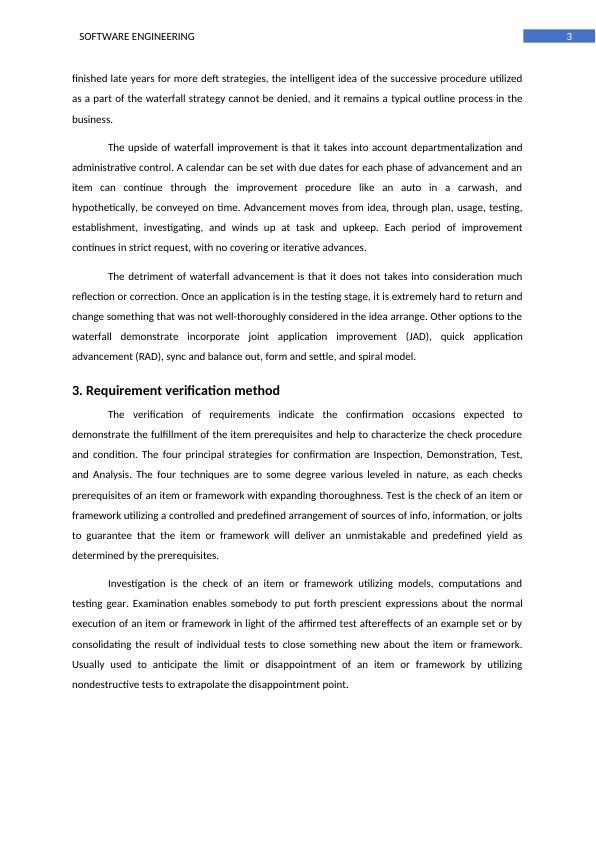Software Engineering for E-Commerce Website 'The Iconic'
Table of Contents for a Software Engineering project
16 Pages3167 Words409 Views
Added on 2023-06-12
About This Document
This article discusses the software engineering process model, requirement verification method, context diagram, actors and use cases, fully developed use case description, activity diagram, sequence diagrams, class diagram, verification of user requirements, system specification, software testing and acceptance criteria, and proposed deployment strategy for an e-commerce website 'The Iconic'.
Software Engineering for E-Commerce Website 'The Iconic'
Table of Contents for a Software Engineering project
Added on 2023-06-12
ShareRelated Documents
End of preview
Want to access all the pages? Upload your documents or become a member.
System Analysis: Feasibility Study and Lifecycle Models
|24
|4376
|346
System Analysis and Design: Evaluation of SDLC Models and Feasibility Report Components
|25
|5614
|299
Nova cosmetics Assignment PDF
|24
|4287
|111
System Analysis and Design: Feasibility Study and SDLC Models
|24
|5055
|304
Software Engineering: SRS Document, Process Model, Use Cases, and More
|35
|8787
|395
Systems Analysis and Design for Adroit Ads Company
|29
|5985
|419




